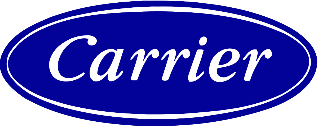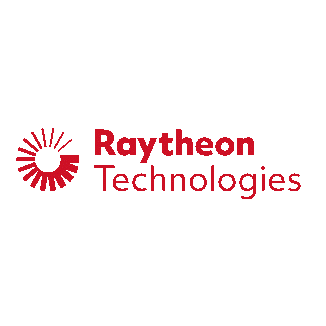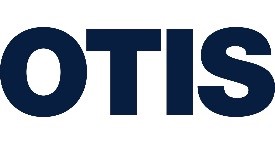Fighting Inflation
The global economy is forecast to contract 5% in 2020; yet, paradoxically, a number of investors are worried about inflation since the Federal Reserve and other central banks began flooding the markets with stimulus. At the same time fiscal expenditures have soared to help alleviate the effects of the coronavirus pandemic, while tax revenues have plunged.
In May of this year, the U.S. deficit widened to $424 billion, double what it was in May 2019. The Congressional Budget Office (CBO) estimated that the federal deficit for the first eight months of the fiscal year, which began in October 2019, totaled $1.9 trillion – that’s 157% higher than the same period last year. The CBO estimated the 2020 deficit could reach nearly $3.7 trillion, easily surpassing the previous peak during the last downturn. The deficit, as a percent of GDP, is projected for the year at 18%, the highest level since the last recession.
Even modest inflation can have a deleterious effect on retirees’ savings and fixed income. A 3% inflation rate over 10 years will reduce purchasing power by approximately a third.
In addition to expansive fiscal policy, the Federal Reserve is injecting substantial liquidity into the economy by purchasing bonds. By the end of the year, the Fed is projected to purchase $3.5 trillion in government securities. The Fed’s goal is to provide liquidity to credit markets in times of market stress and to support a market recovery. In the past, large scale government spending and an expansion in the money supply have often led to bouts of inflation that were difficult to tame.
Yet inflation has failed to take hold over the last decade following the 2008-2009 financial crisis when central banks began flooding the markets with easy money. Should investors fear a return of inflation now, especially as deflationary pressures from improvements in technology, automation and demographics work to tamp down inflation in the developed world? Some indicators suggest there will be little inflation for the immediate future. The bond market’s expectation for inflation, determined by the ordinary Treasury 10-year yield minus the yield on the 10-year inflation linked notes (TIPS) yield, implies inflation of just 1.19%.
However, several factors may be different this cycle. There has been a trend toward shrinking international trade and de-globalization with companies bringing production back to high cost home markets. The scale of the fiscal and monetary stimulus is much greater this cycle. In the past two months, the money supply has risen at an annualized rate of 102%. Prices for gold began increasing in mid-March parallel to when the Fed launched several programs to improve liquidity. Buying gold has historically been seen as a hedge against inflation.
A 3% inflation rate over 10 years will reduce purchasing power by approximately a third.In principle, equites are a good hedge against inflation in the long run. Businesses sometimes (depending on the degree of competition) can raise prices to cover rising input costs – although over shorter time horizons, there is a lag. A recent Credit Suisse Group study confirms earlier research that stocks are a good inflation hedge in the long run. The study shows that global equities have returned an average of 5.2% a year above inflation since 1900.
At Delta, our focus is providing our clients with a well-diversified portfolio that seeks returns to protect purchasing power and provides some level of growth while managing risk. Although stocks provide the best inflation protection over the long term, bonds can be used to reduce overall volatility for those clients who are sensitive to market swings in addition to providing income. The important takeaway is that inflation is unpredictable and plays out in unpredictable ways. It is wise to consider the impact that even modest amounts of inflation can have on future purchasing power and to incorporate that risk in the construction or makeup of your portfolio.
June 24, 2020
Company Comments
Comments follow regarding common stocks of interest to clients with stock portfolios managed by Delta Asset Management. This commentary is not a recommendation to purchase or sell but a summary of Delta’s review during the quarter.
Accenture is one of the largest information technology (IT) providers in the world, providing solutions for specific enterprise problems as well as strategy and advertising consultancy. The company has a broad top tier client base, integrating and developing software for 80% of the largest global 500 companies. Of Accenture’s top 100 clients, 95 have been with them for 10 years or more. Accenture achieves sought after scale and servicing by employing over 500,000 people throughout 200 cities in 51 countries.
Many of Accenture’s clients are in the early stages of their digital transformations and recognize that technology is central to their businesses. The firm provides large systems integration for companies such as Microsoft, Oracle, Salesforce, SAP and Workday. Its engineers customize the software to the client’s needs by building capabilities, connecting databases or adding extra analytics. Accenture’s personnel are often embedded throughout a client’s business. In developing expertise across a wide spectrum, Accenture can develop best industry practices and apply solutions throughout its client base.
Outsourcing is another side of Accenture’s business. It focuses on repeatable business processes such as data centers, accounting, procurement and application services. After a software integration project, clients can choose to have Accenture manage and maintain software and systems in various departments. These contracts span several years, and there is significant investment by the client making it difficult for Accenture to be displaced.
The company is continually adapting new technology and services to remain relevant and engaged with its most important customers. In 2019, Accenture invested $800 million in research and development and had over 7,400 patents and pending patent applications. At the same time, the company invested $1.2 billion across 33 acquisitions to gain additional skills and talent in high-growth areas of the market. These investments have allowed the company to provide cutting edge solutions in artificial intelligence, blockchain, extended reality, quantum computing, cybersecurity and more. As an example, the company last year partnered with Qualcomm Technologies and Kellogg to create and test a virtual reality solution that embeds eye-tracking technology in a mobile headset to gather insights on what grocery shoppers are looking at and why.
Many of Accenture’s clients are in the early stages of their digital transformations and recognize that technology is central to their businesses.
Like most consulting firms, Accenture is dependent on a high utilization of its employee base. Increasing automation in some of Accenture’s processes may result in lower utilization rates if the company fails to predict its personnel needs. Another key risk is its dependency to tap international locales for skilled technical talent. Accenture has some risk relative to the increasing denials of H-1B visas, although this has affected the entire industry.
Accenture has a relatively new CEO, Julie Sweet, who assumed the role in September 2019. She was an internal candidate, having previously served as CEO of Accenture North America for four years after serving as Chief Compliance Officer for five years. Accenture’s strong bench of experienced executives bodes well for its stewardship during the CEO transition.
Although the company has experienced some negative impact from the COVID-19 pandemic, it is also experiencing growth in some of its segments. In the second quarter the company posted new order bookings of $14.2 billion sequentially up from the previous quarter and 20% higher than a year ago. The company has seen a double-digit spike in health and public sector sales, particularly driven by federal and state government expenditures, and in helping businesses deal with the pandemic’s effects on day-to-day operations. Nonetheless, near-term revenue has shown some softness with the new business consisting mostly of long-term contracts.
Based on the financial characteristics we have outlined, we assume that Accenture can grow its revenue at an annual average rate of approximately 4% over the next decade. At this pace of growth and given improved efficiency, we believe cash flow margins can average 11% during the period. Accordingly, our stock valuation model indicates a long-term annual rate of return of approximately 10%.
Stanley Black & Decker, Inc. { SWK }
Founded in 1843, Stanley Black & Decker is a global leader in providing hand and power tools and related accessories as well as a range of security products and services to consumers and industrial customers. Despite its age, Stanley has experienced tremendous growth in recent decades. It is remarkable to consider that approximately 80% of the revenue growth has occurred since the year 2000.
Reliability and brand loyalty are important factors in the North American tool market. Customers have long memories and can be unforgiving if a manufacturer cuts corners. This brand consciousness helps Stanley in positioning with big box retailers. Retailers look for strong brands that command a premium margin and provide a broad umbrella of products to satisfy core customers. In 2019, the Tools and Storage segment of Stanley accounted for 70% of revenues and 78% of the company’s operating profit. Brand loyalty of tools is extremely high across markets, and many users are willing to pay a premium price for quality products.
Historically, Stanley has been a serial acquirer and has a successful track record of integrating over 70 acquisitions since 2004. On average, Stanley has improved operating margins by six percentage points on acquired businesses. It absorbed the larger Black & Decker in 2010, significantly broadening its product portfolio and yielding revenue and cost synergies well beyond the original expectations.
Stanley dedicates 50% of its capital budget to acquisitions, with a focus on tool industry consolidation and expanding its industrial platform.
The merger has created the largest provider of hand and power tools with enormous global reach and channel access, including high growth emerging markets such as Brazil. Recent acquisitions include the purchase of the 90-year-old Craftsman Brand from Sears and the purchase of Lenox and Irwin tool brands from Newell Rubbermaid.
Stanley is sharply focused on driving organic growth, which has matched the robust recovery in housing and home improvement. Research and development investment is over $255 million or more than 1.7% of sales. FlexVolt is a good example of new product innovation. Launched in 2016, FlexVolt has generated over $100 million in global revenue, accounting for half of the 7% organic growth of the company since its debut.
The COVID-19 crisis is likely to reduce organic growth for the year, but we expect the company to adapt and recover. Stanley’s management is exceptionally focused on improving efficiency and taking advantage of scale. While consumers’ spending has been focused on food and cleaning supplies, it does help Stanley that store traffic to Home Depot and Lowe’s is up and many consumers have used their time sheltering at home to take on home improvement projects.
Longer term, acquisitions will continue to play a role in the company’s outlook. Stanley dedicates 50% of its capital budget to acquisitions, with a focus on tool industry consolidation and expanding its industrial platform. The branded tool and storage products are critically important aspects of the company, providing strong free cash flow and modest growth. Stanley will continue to invest in new product development, such as Smart Tools and higher voltage power tools, and increase its brand support through marketing and promotional activities.
Stanley has a successful acquisition track record, but its acquisitive nature remains an ongoing risk. Acquisitions always introduce the risk of overpaying and later facing asset impairments or inadequate returns on invested capital. Stanley also faces commodity price risk. In addition, Stanley could face pressure from tariffs on steel and aluminum. The company does have the benefit of a domestic supply chain as approximately 50% of the company’s North American tools are manufactured domestically. However, the company’s consolidated customer base and competitive markets may prevent Stanley from fully passing along rising costs in the form of price increases.
We believe Stanley can grow organically in the low single-digits. We also expect Stanley to continue its acquisition program and to fund it through free cash flow and debt financing. Based on this growth, we anticipate operating margins around 12% over the business cycle. Given these assumptions, our valuation model indicates that the company’s stock is priced to generate an average long-term annual rate of return of approximately 8%.
Carrier Global Corporation { CARR }
Carrier is a leading provider of HVAC, refrigeration, fire and security solutions. The company’s products promote smarter, safer and more sustainable buildings and infrastructure and help to effectively preserve the freshness, quality and safety of perishables across a variety of industries. The company has an extensive global footprint with approximately 53,000 employees, including 3,600 engineers. Its products and services are sold in over 160 countries worldwide.
Much of Carrier’s innovation is driven towards long-term growth drivers, such as increasing climate regulations and digitalization of products toward automation and predictive maintenance. Carrier has released 200 new products during the past two years.
The primary strength of Carrier is found in its HVAC segment, which provides heating and air products, controls and solutions. The company’s competitive advantages include strong brands, leading positions and scale. The company is a top player within both residential and commercial unitary systems. Carrier has built its leading positions through a record of innovation, which continues today. Since 2014, it has grown its engineers by 20% to 3,600 and holds approximately 7,000 patents. Much of this innovation is driven towards long-term growth drivers, such as increasing climate regulations, and digitalization of products toward automation and predictive maintenance. Carrier has released 200 new products during the past two years.
The company’s broad range of product and service offerings, reputation for quality and innovation and industry-leading brands make it a trusted provider for critical applications in the construction, transportation, security, food retail and pharmaceutical industries among others. Carrier is focusing its investments on developing smart, sustainable and efficient solutions for mega-trends (according to the company) of urbanization, climate change, increasing requirements for food safety driven by the food needs of our growing global population, rising standards of living and increasing energy and environmental regulations.
The company recently launched its Carrier 600 Plan. The operating initiative is expected to result in substantial cost savings from supply chain improvements, better factory efficiency driven by automation, and lower general and administrative expenses by increasing shared services. The plan is expected to generate $600 million in annual cost savings by year-end 2022. These cost savings will be used for new product innovation, improving operating margins and free cash flow as well as strengthening its balance sheet over time.
A slowdown in commercial construction and new housing starts is a cyclical risk facing Carrier and the industry. The company’s strong market position has typically led to a strong recovery after a downturn in building activity. In addition, the COVID-19 era could have a dampening effect on many of the company’s end markets. Though typically rational, competition will be an ongoing challenge. Carrier faces reputable competitors that continue to invest to improve their own product lines.
We believe Carrier can grow revenue in the low single-digits annually over the next decade. At this pace, in addition to its Carrier 600 operating efficiency plan, we believe cash flow margins gradually will improve to 16% over time. Based on these assumptions, our stock valuation model indicates Carrier’s current price offers a long-term average annual rate of return of approximately 10%.
Raytheon Technologies Corporation { RTX }
Raytheon Technologies is the result of United Technologies spinning off Carrier Global Corporation [see summary above] -and Otis Worldwide Corporation [see summary below] and merging with Raytheon after the end of the first quarter 2020. The restructured company is an even balance between commercial and defense aerospace. Most of its competitors in the industry are skewed one way or the other. Both the aerospace and defense products manufactured by Raytheon are characterized by substantial upfront development costs that require substantial technical and engineering expertise. Raytheon’s markets also are distinguished by deeply entrenched customer relationships and a razor (product) and blade (parts) business model, which create strong barriers to entry and a significant moat for each of these segments.
Raytheon’s markets are also distinguished by deeply entrenched customer relationships and a razor (product) and blade (parts) business model, which create strong barriers to entry and a significant moat for each of these segments.
In its defense segment, the company manufactures missiles as well as missile defense and space systems that include satellites and navigational systems. Deterrence is expected to drive material investment in each of these exposures, and we believe that it will be difficult to decrease defense spending without sweeping political change. Raytheon is one of two leaders in short-range missle defense with its well-regarded and tested Patriot missile defense system. The trend is for continued investment in missile defense, as adversary states are actively developing hypersonic missiles that could penetrate current systems. Missile defense systems require high precision and integrated radar with substantial technical complexity leading to significant barriers and switching costs.
The commercial aerospace segment is comprised of Pratt & Whitney, a jet engine manufacturer. The segment develops, manufactures and services jet engines for civil and military purposes as well as auxiliary power units. Pratt is in the midst of a large ramp up in the production and deployment of a geared turbofan engine used in the Airbus A320 aircraft. It is important to note that Pratt has no exposure to the 737 MAX airliner. Jet engines are often sold at narrow margins to develop as large of an installed base as possible, which in turn provides access to recurring, high margin servicing revenue. Commercial engines are expected to last about 20 to 25 years; as a result, a large installed base gives the company the ability to generate service and parts revenue for decades.
Another division of commercial, Collins Aerospace, manufactures highly integrated, mission critical products, such as landing gear, sensors, avionics and flight controls. The certification process and technical know-how of these products gives Collins a substantive competitive advantage. Switching suppliers for mission critical products would require a considerable effort in redesigning the aircraft to accommodate the new product with attending production delays, updated maintenance procedures and recertification.
Both Airbus and Boeing are continually striving to reduce the margins of their suppliers. As a result, the supplier industry has consolidated, giving companies with size and scale – like Raytheon – more negotiating leverage on pricing than they would have as separate, independent entities.
We do see elevated integration risk for the next couple of years. Raytheon Technologies was formed by several corporate actions, including United Technologies divestiture of Carrier and Otis and subsequent merger of equals with Raytheon. The company has targeted $1 billion in cost synergies, which will be a challenge to achieve during the current COVID-19 pandemic.
The company is led by Greg Hayes who was the CEO of United Technologies prior to the merger. During his tenure he was willing to restructure the portfolio, exiting poor performing segments while acquiring companies that were a strategic fit. He orchestrated the acquisition of Rockwell Collins and led a successful integration and realization of cost synergies.
Raytheon is well balanced between commercial aerospace and defense, which would partially cushion the combined firm from a downturn in either segment. The diversification rationale of the combination of Raytheon and United Technologies is already bearing fruit, as the defense business should hold steady and may even grow during the pandemic. We anticipate revenue growth over the forecast period of 2% with post COVID-19 growth averaging over 3.5%. Based on our assumptions, our financial model indicates that at the current stock price, Raytheon offers a potential long-term return of approximately 10%.
Otis Worldwide Corporation { OTIS }
Otis is the world’s largest elevator and escalator manufacturing, installation and service company. The company installs and services a wide range of passenger and freight elevators as well as escalators and moving walkways for residential and commercial buildings and infrastructure projects. As the largest original equipment manufacturer (OEM), Otis has installed 3.5 million elevators worldwide. Of these, it services 1.5 million from its own brand and 500,000 of its competitors. Otis is truly a global company with well over 70% of its revenues generated outside the U.S. The company operates through an international network of 69,000 employees, including sales reps, field technicians and engineers.
Otis’ main competitive advantages are its global manufacturing scale and large installed base of elevators, which provide a cost advantage. Its market share and scale have been built over many decades of reliability, dependability and know-how, which are critically important to developers.
The firm’s large installed base enables high margin, recurring revenue streams from repair and maintenance services and end-of-lifecycle replacements, all of which provide good future revenue visibility. High margin services now comprise nearly 60% of total company revenue.
Elevator installation and service is mature globally, which will result in modest industry growth long term. Otis does have advantages and investment opportunities to help drive growth potentially ahead of the industry. At the same time, the global elevator fleet is aging. In Europe, where Otis dominates, over three million units are more than 20 years old, the age at which elevators typically need to be upgraded. As these elevators need upgrades, Otis’ 93% service contract retention rate should help drive future revenue growth and maintain industry leading profit margins. In addition, Otis has increased investments in technology to leverage data and digitalization to gain market share and improve productivity. Management is focused on technology investments to improve productivity and expand margins.
One of the main operating risks for the company is to maintain pricing and retention rates in China, which are much lower than those in mature markets. Pricing competition in China is intense. Although Otis tries to focus on the higher end portion of the Chinese market, which is more stable, overall conditions remain challenging. A slowdown in construction or a longer recovery from COVID-19 is a near-term threat. Namely, the potential permanent increase in employees working remotely could result in more limited elevator use with less need for maintenance and repair.
Otis’ large installed base enables high margin, recurring revenue streams from repair and maintenance services and end-of-lifecycle replacements, all of which provide good future revenue visibility. High margin services now comprise nearly 60% of total company revenue.
Given its large market share and industry maturity, we believe Otis can grow revenue in the low single-digits annually over the next decade. At this pace, given rational competition and its expanding high margin services portfolio and the company’s operating efficiencies, we believe its cash flow margin can average approximately 16% during this period. Based on these assumptions, our stock valuation model indicates Otis’ current price offers a long-term average annual rate of return over 8%.
For a PDF of this letter please click here.
Dated: June 24, 2020
Specific securities were included for illustrative purposes based upon a summary of our review during the most recent quarter. Individual portfolios will vary in their holdings over time in relation to others. Information on other individual holdings is available upon request. The information contained herein has been obtained from sources believed to be reliable but cannot be guaranteed for accuracy. The opinions expressed are subject to change from time to time and do not constitute a recommendation to purchase or sell any security nor to engage in any particular investment strategy. Any projections are hypothetical in nature, do not reflect actual investment results and are not a guarantee of future results and are based upon certain assumptions subject to change as well as market conditions. Actual results may also vary to a material degree due to external factors beyond the scope and control of the projections and assumptions.






